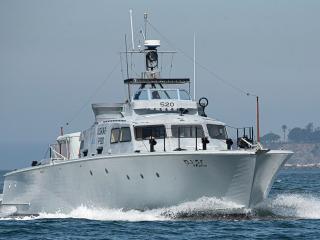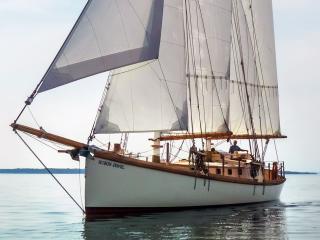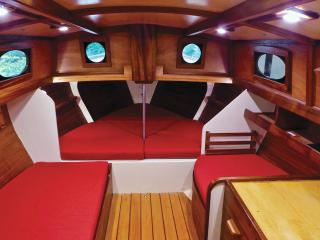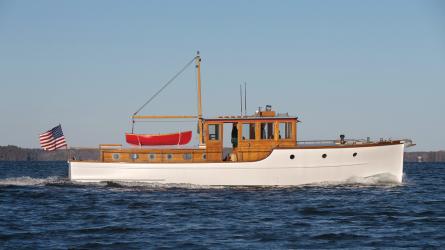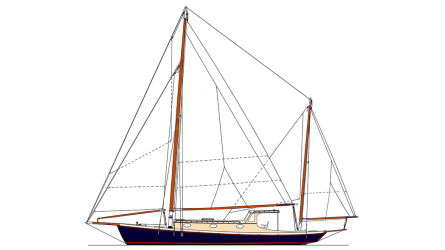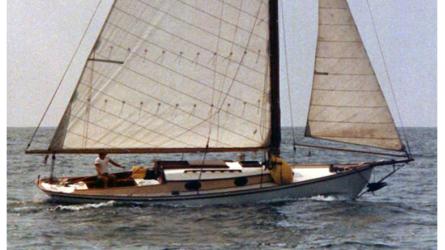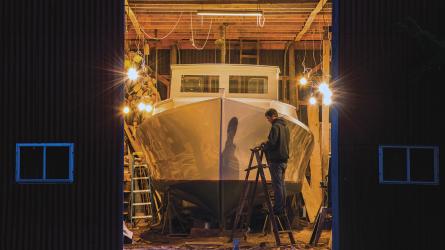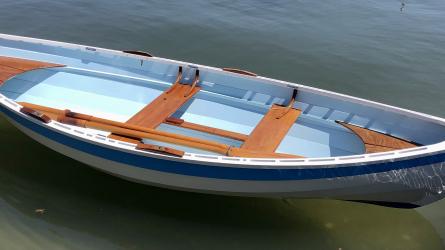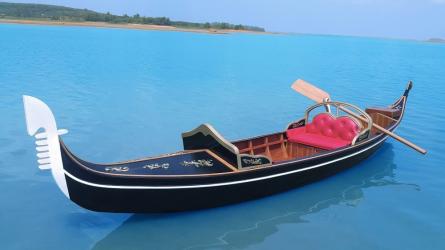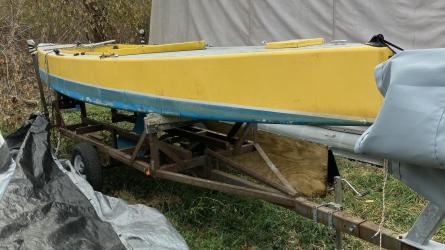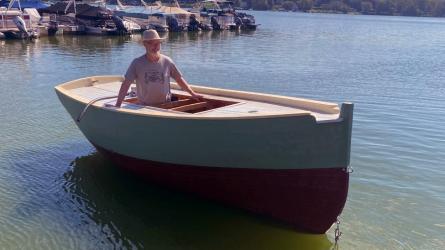November / December 2019
A Schooner for the Ages
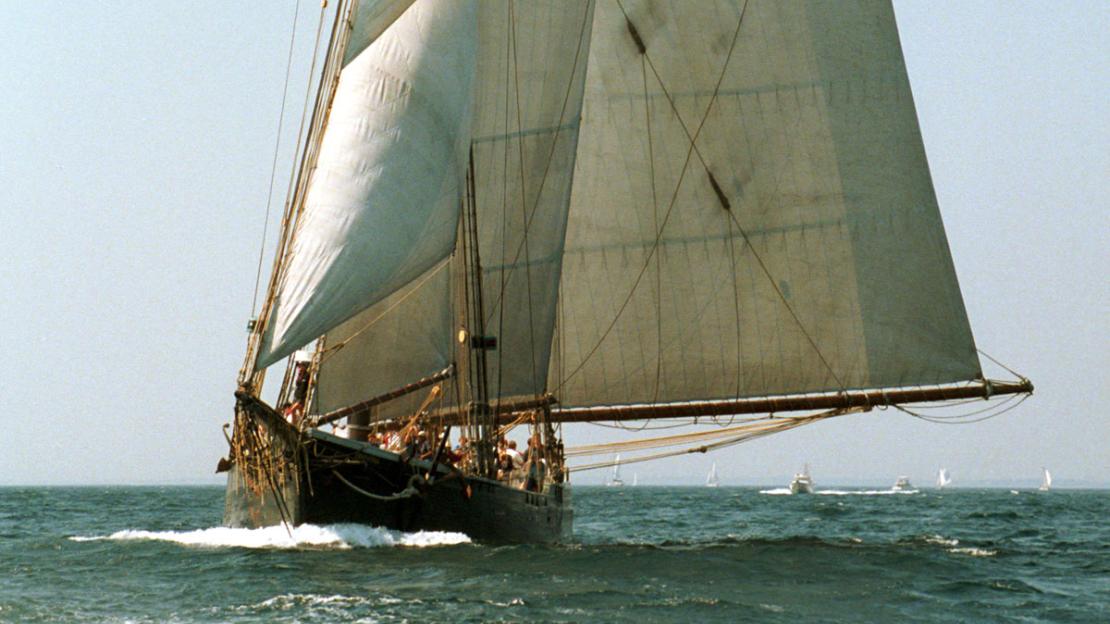
The schooner ERNESTINA sails in the Gloucester Schooner Festival in Massachusetts, an annual Labor Day weekend gathering. ERNESTINA was launched in neighboring Essex as the EFFIE M. MORRISSEY in 1894; her luminous careers in fishing and Arctic exploration are recounted in the previous issue. Her mission is now education, and she is currently being rebuilt.
The previous issue of WoodenBoat included the story of the first three careers of the legendary Essex-built schooner ERNESTINA-MORRISSEY. After fishing successfully for more than two decades, she gained notoriety as an Arctic exploration vessel under the command of Capt. Robert Bartlett. And during World War II, she was a supply vessel. Here, we pick up the story with her transformation into a vessel of immigration.
—Eds.
Cape Verde Packet
In the spring of 1946, only romantic dreamers or visionaries could imagine any value in a 52-year-old, wooden fishing schooner turned Arctic explorer, a relic from the days of Rudyard Kipling’s Captains Courageous. Without Bob Bartlett around to look after his “girl,” she languished as part of the late captain’s estate, waiting for a buyer, first in New York and then in Gloucester.
Eventually an interested trio appeared. The Jackson brothers, Sidney and Melvin, and their friend Michael Wassel came to Gloucester, wandered over the schooner’s decks, and imagined sun on their cheeks, wind in their hair, and the hiss of the EFFIE M. MORRISSEY’s bow wave on the downwind run to Tahiti. These young, restless, well-educated Navy veterans of the South Pacific Theater of World War II took one look at Bartlett’s schooner and thought she could offer them an adventure in Paradise far superior to anything they could find in the law offices and boardrooms of New York.
After buying the MORRISSEY, spending a few months outfitting her in New York, and soliciting for a crew of free spirits, the Jacksons headed their schooner for the Caribbean. But their previous seafaring experience was in steel military vessels and small yachts. Faced with a leaky transom and weeping planks, they grew anxious. After expensive and ineffective repairs in Bermuda and Haiti, and dire evaluations of the MORRISSEY’s seaworthiness by island shipwrights, the adventurers gave up their dreams of a South Seas voyage and returned to Flushing Bay, New York, where they used their schooner for housing.
To read the rest of this article:
Click the button below to log into your Digital Issue Access account.
No digital access? Subscribe or upgrade to a WoodenBoat Digital Subscription and finish reading this article as well as every article we have published for the past 50+ years.
ACCESS TO EXPERIENCE
2-for-1 Print & Digital Subscription Offer
For this holiday season, WoodenBoat is offering our best buy one, get one deal ever. Subscribe with a print & digital subscription for $42.95, and we’ll give you a FREE GIFT SUBSCRIPTION to share with someone special.
1 YEAR SUBSCRIPTION (6 ISSUES)
PLUS ACCESS TO MORE THAN 300 DIGITAL BACK ISSUES
PRINT+DIGITAL $42.95
Subscribe
To read articles from previous issues, you can purchase the issue at The WoodenBoat Store link below.
 Purchase this issue from
Purchase this issue from
